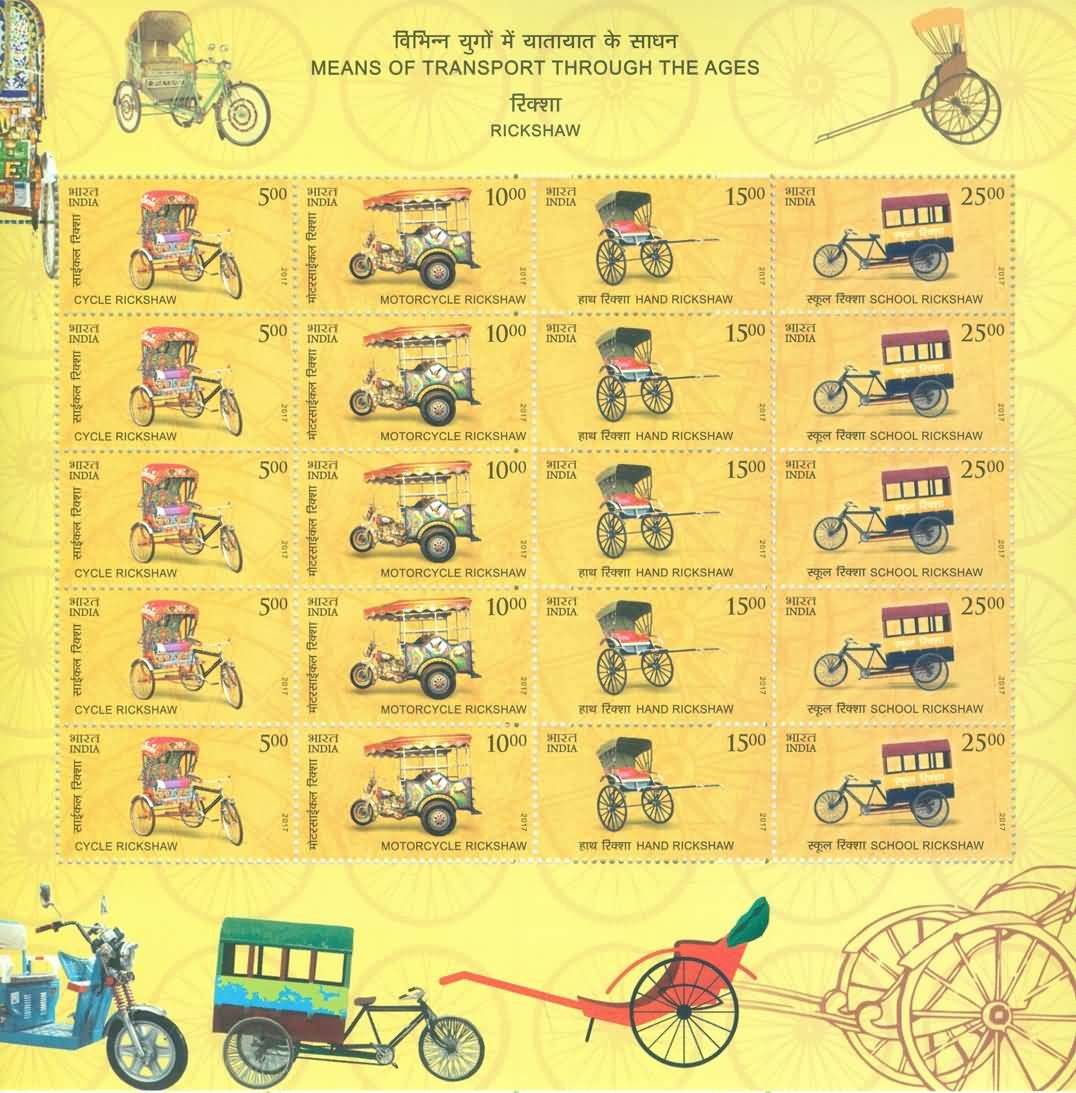Rickshaws

Technical Data
| Stamp Set | Means of Transport |
|---|---|
| Date of Issue | March 25, 2017 |
| Denomination | Rs. 275 |
| Quantity | 15,000 |
| Perforation | 13 |
| Printer | India Security Press, Nashik |
| Printing Process | Wet Offset |
| Watermark | No Watermark |
| Colors | Multicolor |
| Credit (Designed By) | Sh. Brahm Prakash |
| Catalog Codes |
Michel IN 3135-3138KB |
| Themes | Transport |
Introduction
Rickshaws hold a prominent place in the history of transportation in India. They represent an important phase of mobility where human and later mechanical effort became a means of affordable public transport. Over time, the evolution of rickshaws has shaped social and economic life in towns and cities across the country.
Origin and Introduction in India
The presence of horse-drawn transport in the 19th century set the stage for the arrival of rickshaws. Around 1880, the first hand-pulled rickshaws appeared in Shimla, and approximately twenty years later, they became common in Kolkata. Initially, Chinese traders introduced them for transporting goods, but soon, rickshaws became a popular passenger transport for the masses.
Pulling a rickshaw often became the first source of livelihood for migrant peasants arriving in the cities in search of work.
Evolution of Rickshaws
The journey of rickshaws reflects the technological and social progress of the nation. What began as a manually pulled vehicle gradually transformed into multiple forms to meet changing needs.
1. Hand-Pulled Rickshaw
- The earliest form of rickshaw
- A two-wheeled passenger cart pulled by a single person
- Symbolic of urban life in Kolkata for decades
2. Cycle Rickshaw
- Introduced as an improved and less labor-intensive version
- Pedal-driven three-wheeled rickshaw with space for two passengers
- Still widely used in many Indian towns and cities
3. Auto Rickshaw
- Mechanized version powered by a motor engine
- Affordable, fast, and widely used across rural and urban India
- Became a common means of daily commute
4. School Rickshaw
- A modified cycle rickshaw designed specially for transporting children
- Equipped with multiple seats for school students
- Still a common sight near schools in small cities and towns
5. Motorcycle Rickshaw
- A modern adaptation combining a motorcycle with a carrier for passengers
- Popular in smaller towns for short-distance travel
- Offers quicker and more flexible transportation
Social and Economic Importance
Rickshaws have contributed greatly to local economies by:
- Providing means of employment to thousands
- Offering low-cost mobility to the common people
- Supporting short-distance transportation where larger vehicles cannot operate
- Encouraging small-scale entrepreneurship, with many owning and operating their rickshaws
Conclusion
Rickshaws represent a fascinating journey of India’s transportation heritage—evolving from hand-pulled carts to modern mechanical forms. They reflect the country’s social transformation, economic aspirations, and continuous progression in mobility. Even today, rickshaws remain an essential mode of convenient, economical, and accessible transport for millions across India.
